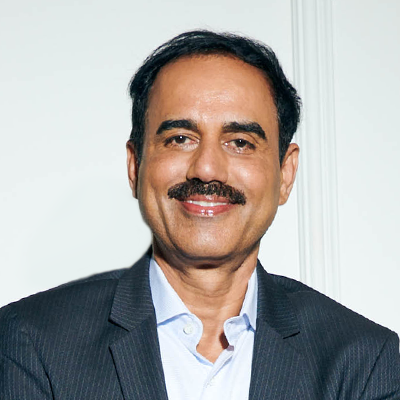Michiel@QA-Financial.com
Michiel Willems
European neobank Revolut has launched an artificial intelligence-powered tool aimed at helping the fintech to slow the growing number of card fraud cases it faces.
The London-based company is the latest financial services player to turn to AI solutions in the increasingly fierce battle against rising fraud.
Revolut, which offers extensive banking services to a global customerbase, said its new solution works as “an added security layer on top of its existing security features, to specifically detect authorised push payment scams.”
London-based David Eborne, head of fraud at Revolut, said the new AI-scam feature “implements advanced technology to interrupt fraudsters.”
Eborne acknowledged digital fraud and online scams are increasingly a headache for the company, as well as for the wider financial services and banking space.
‘Intervention flow’
Revolut’s new security feature is designed to detect a payment is fraudulent, thereby breaking “the spell of the scammer” before money can be transferred, Ebone explained to QA Financial.
It was built in-house by its own financial crime team and is designed to establish the likelihood of a customer’s card being lured into a scam, thereby immediately blocking the payment.

The user of the card is then protected from carrying out similar payments as the Revolut app takes the user to an AI-controlled, digital “scam intervention flow”, Eborne elaborated.
In this protected and secure online space, the user is isolated and asked to provide additional data about the transaction, as well as the relevant accounts, so Revolut can weigh whether its customer was lured by a scammer into a fraudulent transaction.
If that is not the case, he can still finalise the payment, Eborne stressed.
“With this feature, rather than completely block those transactions, we ensure that customers who want to perform legitimate payments continue to do so, but also intervene to protect those who are being guided by criminals to make fraudulent ones,” he said.
“We have invested heavily in the product,” Eborne added.
Measures
Revolut, founded in 2015 by Nikolay Storonsky and Vlad Yatsenko, is increasingly taking harsh measures to crack down on online fraud, an issue the wider industry is struggling with.
Last year banks and financial institutions lost close to $3 trillion through scams, illegal transfers and other fraudulent payments and transactions, according to official estimates, including World Bank data.
UK-based data analytics multinational Experian recently warned that, unless serious measures are taken, losses as a result of fraud could jump by up to 70%.
Therefore, the NASDAQ urged the financial services space and fintech industry last month to speed up the rollout of AI and large language models (LLMs) in the fight against online scams.
It warned that, currently, just over a quarter of all banks and financial institutions have implemented AI-powered solutions to fight illegal money transfers.
‘Heat-sensing radar’
More and more players in the finance space are rapidly ramping up their IT security efforts in order to slow the rise of growing online scams.
Earlier this month, global payment tech company Mastercard rolled out its own generative artificial intelligence platform to allow banks to better spot suspicious and fraudulent transactions.
The tool, called Decision Intelligence Pro, is powered by a generative AI technology, namely a proprietary recurrent neural network.

Decision Intelligence Pro works in real-time and is able to determine whether payments or transactions are legitimate, explained Mastercard’s president of cyber and intelligence business, Ajay Bhalla.
“Our AI’s algorithms use proprietary data from close to 125 billion transactions that are processed by Mastercard each year,” he said.
The tool is developed in a way that it understands the relationship between the merchants better, with a large focus on language models such as OpenAI’s GPT-4 and Google-run Gemini.
It is designed to recognise and predict when fraudulent or suspicious transactions are offered to the network, Bhalla said.
Rather than using words or text, the Mastercard platform turns to the history of a cardholder’s merchant visit to determine whether the business involved in a transaction is a place the customer would likely go.
It then creates pathways through Mastercard’s network, similar to “a heat-sensing radar”, as Bhalla explained to QA Financial, and formulates a score.
The lower the score, the more the platform believes a payment should be marked as suspicious. The entire process takes about 50 milli-seconds.
READ MORE
21i mulling takeovers after testing firm raises fresh capital
CEO Dave Kelly is keen to explore acquisition opportunities following the capital injection
LeadingMile expands TARA testing solution to include Salesforce
The platform provides a Salesforce variant for TARA’s automated testing and robotisation capabilities
Exclusive: Applitools COO on the power of autonomous testing
Ahead of our summit in New York CIty next week, QA Financial sits down with Applitools COO Moshe Milman
‘Test the unlikely’ to maintain operational resilience, warns BoE
BoE’s Sasha Mills said finserv firms need to improve the sophistication of their testing approaches
Synopsys offloads SIG for $2bn despite ongoing lawsuit
The deal is controversial because a private equity firm is suing Synopsys over SIG’s testing tools
Exclusive sitdown with IAR’s newly appointed CEO Cecilia Wachtmeister
IAR recently named Cecilia Wachtmeister as its new CEO. QA Financial caught up with the industry veteran




